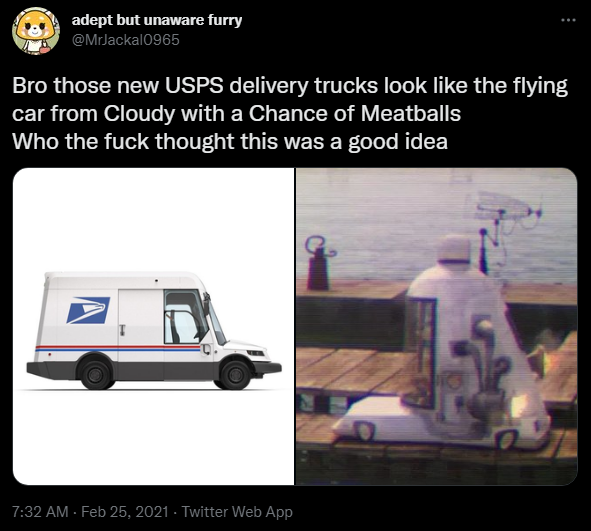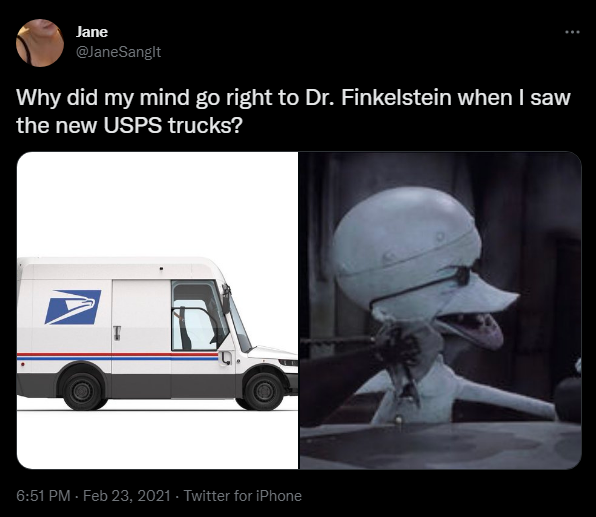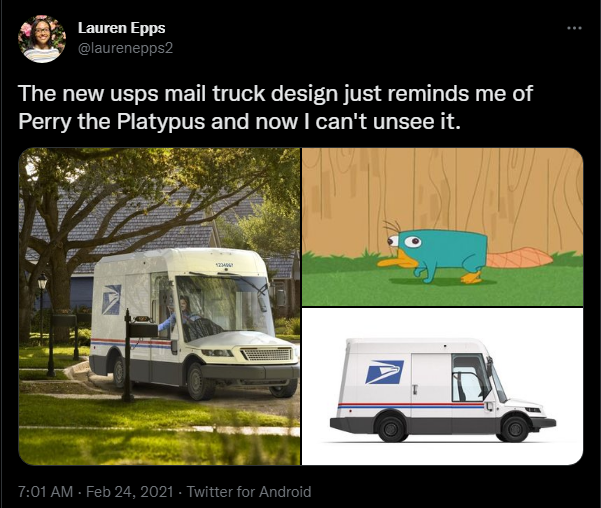USPS: Canoo's next Government Agency client?
- wheresPaunch
- Oct 7, 2022
- 5 min read
Updated: Oct 14, 2023
I am going to assume you, the reader, are at least somewhat familiar with the debate surrounding USPS and their purchase plan for an updated fleet of "next generation" vehicles that were slated to be using last generation tech.
So there shouldn't be a need for a deep dive into the history of the topic, instead we'll give a quick fast and loose review of what has happened.
USPS awarded the original contract of 165k vehicles to Oshkosh Defense, a company mainly known for its military vehicles. These vehicles would be called NGDVs, or Next Generation Delivery Vehicles. They originally only planned for just 10% to be electric and the rest would have legacy fossil fuel powertrains. Calling these vehicles next generational is pretty insulting - they are only expected to increase the MPG to 8.6 from 8.2 that the current LLV's get. But but...but these have air conditioning! yeah ok...really avant-garde thinking there, Oshkosh! This caused a lot of pushback and public ire. USPS relented a little and said "Ok, ok, we're gonna double the EVs from 5k to 10k." in their initial $3B order for 50k NGDVs.
At least the memes weren't terrible.
16 US states, 4 environmental groups and the United Auto Workers filed lawsuits seeking to stop the deal from happening. The Congressional Committee on Oversight and Reform approved H.R. 7682, the Ensuring an Accurate Postal Fleet Electrification Act, to invalidate the faulty environmental impact statement (EIS) that the Postal Service filed as part of its contract with Oshkosh Defense to produce the Next Generation Delivery Vehicle, and to require the Postal Service to produce a new EIS before procuring any additional vehicles under the NGDV contract.
This brings us up to July of this year, where USPS announced some rather big changes to the implantation of the modernization their fleet. As it concerns Canoo, the changes can be split into two different segments:
USPS changed the percentage of BEVs in the purchase order with Oshkosh from 20% to 50%, or 25,000 of the 50,000 ordered AND they will order 34,500 of what they are calling COTS, or "commercially of-the-shelf" vehicles.
USPS is capping their current order with Oshkosh at the 50,000 and deploying a wait and see attitude in regard to future vehicle purchases.
USPS is saying there is an immediate need to accelerate the replacement of its aging fleet so over a 2-year period they're going to buy 34,500 COTS and include "as many BEVs" that are available and meet operational needs. How many is "as many"? They don't state it specifically, but of the 84,500 vehicles currently anticipated by the postal service, they think at least 40% will be electric. 40% of 84,500 would be 33,800 and if we know 25,000 NGDVs are coming that leaves 8,800 EVs open to come from other manufactures. In order to know if Canoo would qualify as a contender, one must answer just two questions:
Are they "commercially available"?
Do they "satisfy operational needs"?
Lets answer the easy one first, will they meet the needs and demands of moving mail short distances? Yes I believe so, if they can deliver bins of groceries for Walmart they can handle bins of mail. The average postal route requires 24 miles of driving and nearly all of them are less than 70 miles - Canoo's LDV having 200+ range, 121 CU. FT of cargo volume and a payload rating of 1,543 lbs its easy to suggest it will satisfy.
But are they available? Yes...or rather, they will be. Remember that USPS plans to procure them over a 2 year period and Canoo is only a couple months away from Start of Production to fulfill Walmart's PO of 4500 and is projecting a run rate of 20k units a year by end 2023.
Moving onto the second segment of Julys announcement: USPS changed it original target order of 165,000 with Oshkosh over 10 years instead limiting it to 50,000 through 2027. Louis DeJoy, serving as current U.S. Postmaster General, has insisted he isn't anti-EV but that they can't justify the cost of full electrification. USPS vowed to conduct additional impact studies before each round of vehicle purchases, saying it will carry out those evaluations frequently so it can quickly adapt to changes in technology, market conditions and its own operational strategy.
The agency was leaving the door open to buying even more EVs in the future if financial conditions improved. The passing of the IRA gave USPS an additional $3.3 billion in funding which decidedly improved financial conditions. With the additional funds from Congress It would be nice to see them scrap the ICE engine order all together but all we can go off is the current situation publicly stated: At least 8,800 EVs are anticipated to be ordered over the next 2 years and 115,000 more vehicles are up for grabs through 2035 if USPS still plans on taking delivery of 165,000 in total by then.

Even after adjusting their purchase plan they still face significant public and private pressure. Rep. Carolyn Maloney of NY, who is the chairwoman of the House Committee on Oversight and Reform, released a statement that she will "continue to fight for the Postal Service fleet to fully transition to electric vehicles." It's worth noting that Maloney is the author of H.R. 7682, mentioned earlier, and that Canoo spent time lobbying on the bill. Canoo's projections on their EV's capabilities and industry insights likely helped Maloney to come to the conclusion that USPS could and should have done a better job with its EIS.

Ordering from Canoo, who is an All American company with existing relationships with other governmental agencies and strong ties to US Lawmakers, ought to be worth political capital for USPS.
But does USPS even know who Canoo is? Yes! At the outset of their recent trip to Washington DC, we heard it described as Canoo visiting their clients and lawmakers. We had confirmed sightings of them holding familiarization events with test drives outside of the US Capitol, Walmart, NASA, the DoD(Pentagon) and yes, even outside USPS headquarters.
The other companies or agencies visited by Canoo on this trip have all signed contracts with them and could be considered "clients", this makes us believe it is a strong indication that Canoo and USPS are at least in discussions with each other to implement a true "next generation" vehicle into the postal fleet.
Time will tell, but we're anticipating a future where your groceries, mail and astronauts will be all be delivered by a Canoo.
Authors disclosures: I am long Canoo - I own common shares, warrants and call options.

















Thank you for providing information on developments so relevant to Canoo shareholders in a very rational manner. I too am long in common stock for over two years and never sold a share.